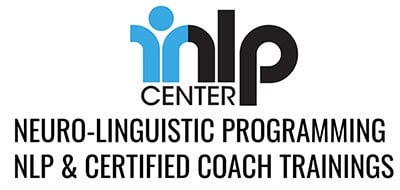As a coach, group coaching is your key to enhancing the value and reach of your services. It allows you to impact a wider audience, foster a sense of community among clients, and offer a cost-effective coaching solution to those who can’t afford individual sessions.
If you’ve ever wondered how you could serve more clients and impact more lives despite a crammed schedule, this guide is for you. In it, you’ll discover what group coaching is and who it’s for, what it takes to build an effective coaching program, and what techniques you can use in a group coaching environment.
Let’s dive in.
What Is Group Coaching?
Group Coaching is a coaching relationship where two or more coachees have similar or identical goals and are collaborating at different levels to accomplish the goal.
Group coaching fosters a collaborative coaching relationship between the coach and multiple coachees who share (or align on) goals. Together, they engage in dynamic collaboration at various levels to achieve their ambitions.
True to its name, group coaching takes the principles of individual life coaching and expands them to a collaborative group setting. It’s far more than simply gathering people together. Instead, it builds a dynamic space where individuals co-create and work towards shared goals.
Group coaching adds a powerful layer of community and shared learning to the coaching experience.
Group Coaching vs Individual Coaching
The fundamental difference between group coaching and 1:1 coaching lies in the number of clients involved. Whenever more than one client engages in a coaching session, it is considered group coaching.
For instance, a coaching session involving a couple working on relationship goals or business partners wanting to enhance their leadership skills falls under group coaching.
At times, working within a group is imperative, as illustrated in the prior examples. In other instances, it’s a deliberate choice driven by the benefits of group coaching over individual coaching.
Here’s a breakdown of the benefits of each format, from a client’s perspective:
| Individual Coaching | Group Coaching |
|---|---|
| Personalised work | Sense of community |
| Customized packages | Affordability |
| Flexible pacing | Shared learning experience |
| Deeper exploration | Networking opportunities |
| Confidentiality | Accountability and support |
Which approach is more effective? A client’s unique needs, available resources, and current situation play a pivotal role in selecting the most suitable coaching format.
A proficient coach recognizes this complexity and remains prepared to offer either group or individual services based on the client’s specific requirements.
The goal is always to assist clients effectively, ensuring that their needs are met through tailored and adaptable coaching approaches.
Group Coaching vs Training vs Teaching
Many coaches do public speaking and on-site or online training. But in those moments, they are not coaching, even though they may be using coaching techniques.
Though the coach may offer coaching, training, and teaching, it’s important to understand the three are separate services.
A “teacher” delivers knowledge, and the students absorb it. The teacher has authority over that knowledge.
Compared to teaching, training is generally hands-on. The trainer teaches but also helps the client apply the knowledge through the study of real-life scenarios and practice exercises.
The purpose of coaching (group and individual) is to help clients find and process inner resources to help them achieve their goals. In a coaching relationship, unlike teaching, the coach doesn’t have authority over their client’s learning. The coachees process the content using their map of reality.
Who’s Group Coaching For
Group coaching is an indispensable tool for coaching individuals with a common objective.
1. For people collaborating on a project
Any coach who has individually guided multiple people through the same project understands the challenges posed by differing perceptions and approaches. In such environments, group coaching isn’t just desirable; it’s a necessity.
2. For people sharing similar life experiences
Clients pursuing general goals that may align with those of others can also benefit from the group dynamic. They find support and motivation from people who are on a similar journey even though they may have different end goals.
3. For people who are new to coaching
Group coaching also works well for people who are new to coaching and have skepticism about engaging in an in-depth process.
4. For people looking for an affordable coaching solution
Finally, it’s a great coaching format for those who may find it challenging to afford 1:1 coaching. group coaching offers a more accessible alternative.

How to Structure a Group Coaching Program
Once you decide to start coaching groups and learn the right skills, it’s time to structure your group coaching program. Here are important considerations for creating your package.
Duration
Flexibility and adaptability in structuring the duration of both the coaching program and the sessions can significantly contribute to the success of a group coaching program.
Depending on the size, formation, and niche of your group, you can choose to have a pre-determined package with about fourteen sessions (~3 months) or an ongoing group that people can join at any moment and stay for as long as they want.
The duration of sessions is an important criterion.
Most coaches prefer to have longer sessions when working with groups. For example, if your regular session is sixty minutes, you may want to open from ninety to a hundred and twenty minutes so everyone has time to participate and share.
It’s essential to strike a balance between providing sufficient time for meaningful interactions and discussions while respecting the participants’ schedules and attention spans.
Ultimately, the choice of duration depends on the coach’s preferences, the nature of the coaching group, and the specific goals intended to be achieved within the sessions.
Pricing
Prices vary a lot depending on several elements like region and niche.
Let’s suppose you have already set the price for your one-on-one packages.
Now, let’s say you plan on spending twice the time with a group than you do with individuals and that you’d like to charge your group clients half of what you charge for 1:1 coaching.
You’d only need four clients in your group to make as much money as you do with individual clients. Any more than that will be additional revenue.
Let’s remember it’s easier to get clients at a lower price. Once you build rapport with those clients, they will be more inclined to turn into one-on-one clients.
With that in mind, many professional coaches offer free group coaching to attract new clients. These free experiences are usually not as complete as a paid group coaching package – or may be limited to a single session.
Group Creation
There are several important elements to consider in the creation of your group.
The first one is the kind of group you want to work with. For example, you may want to work with couples to help strengthen their relationships, business partners to achieve specific goals in their company, or people who have a shared goal (though they may not know each other).
At the iNLP Center, we distinguish three formations of groups in our Group Coaching Training:
- Same goal groups
- Individual goal groups
- Masterminds
We help the students identify which of these formations matches their style of coaching and group them to make sure they maximize the impact of the skills they learn.
How many people should you have in a group?
If you have two coachees, you already have a group coaching environment.
However, most groups have four to ten coachees.
Some groups can get bigger, with some reaching twenty people or more. But in groups of more than ten clients, it becomes difficult for both the coach and the coachees to maintain a coaching mindset. The more people you add, the more likely the session is likely to resemble teaching or training.

5 Group Coaching Techniques
As a professional life coach, you already own most of the skills you need to coach groups. However, there are important keys to adapting your coaching models to a group experience.
On one hand, you need proper coaching techniques. On the other hand, you need to practice tying the techniques to the constitution of your group.
Here are three techniques we teach in our NLP-integrated Group Coaching Training.
1. The Disney Strategy
The Disney Strategy, derived from Walt Disney’s creative process, is a technique used to foster creativity and problem-solving. It involves breaking down a process into three distinct roles or perspectives: the Dreamer, who generates creative and unrestricted ideas; the Realist, who pragmatically assesses these ideas; and the Critic, who evaluates potential challenges and provides constructive feedback.
This approach facilitates a comprehensive exploration of ideas, balancing creativity with practicality, and is especially effective in collaborative group settings where diverse viewpoints can be integrated.
2. New Behavior Generator
The New Behavior Generator is a technique issued from neuro-linguistic programming (NLP) that helps clients acquire and integrate new behaviors into their lives.
Using the new behavior generator, you will guide your clients to dissociate from a stuck state, see new possibilities they could not think of before, and register new, productive behaviors into their minds.
Performed well, this technique can be just as effective in a group environment as it is in 1:1 coaching sessions.
3. Perceptual Positions
Perceptual Positions is a group coaching technique that can improve a person’s empathy, communication, and problem-solving.
Perceptual positions invite the coachees to visualize a situation from three different perspectives: an objective observer’s, another party’s, and finally, their own.
By looking at a situation from different angles, coachees acquire new insights and understanding they can apply to real-life situations.
4. The Milton Model
The Milton Model is a pattern of communication that allows the coach to use coaching techniques they have learned for 1:1 coaching with groups.
The essence of the Milton Model is the use of artfully vague and metaphorical language. This approach allows individuals to fill in the gaps with their own experiences and meanings, making the coach’s suggestions more personal and impactful.
This technique allows you to gently guide your coachees’ thought processes without having to address them individually.
5. The Spotlight
The spotlight requires skill and practice, but when well learned, can be one of the most effective group coaching approaches. It is not a technique, but a way to perform techniques that can be used for the benefit of the whole group.
Essentially, the coach will find one volunteer from the group and will use an NLP technique with that volunteer.
Different from one-on-one coaching, the coach will have to run the technique in a way that allows all coachees to benefit from it, not just the person in the spotlight.
When using the spotlight, two conversations are happening in parallel – one with the spotlight client and one with the group. And each conversation is a meta-conversation to the other, meaning the coach is managing 4 lines of conversation at once.
The Best Way to Learn Group Coaching
As a life coach, you’ve learned powerful skills to surface insight and create lasting change in individuals.
But how do you translate these methods to a group setting where you’re not talking to one but several individuals? How do you make sure that your clients get value out of each session, even when they’re not in the hot seat? And how do you remain true to the principles of coaching and avoid crossing over to the realm of training or teaching?
These are some of the challenges we help coaches prepare for in our Group Coaching Certification Training. It’s a training designed for existing life coaches interested in adding group coaching to their product offering.
Join the training to learn how to build rapport with a group, manage group dynamics, facilitate individual exploration and transformation, and much, much more.



